Anti-aircraft gunners in the defense of Sevastopol. By airplanes, tanks and manpower to the last shell
Before World War II, the cover of the Main Naval Base of the Black Sea fleet (ГВМБ ЧФ) - Sevastopol from an air attack was carried out by the 61st anti-aircraft artillery regiment (zap) with machine-gun and searchlight battalions. It consisted of four divisions. Three of them, armed with medium-caliber artillery systems (SZA), were equipped with the latest at that time, 85-mm anti-aircraft guns and semi-automatic anti-aircraft guns of 76,2 mm caliber. The fourth division of small-caliber anti-aircraft artillery (MZA) had 16 automatic guns of 37 mm caliber. The machine gun battalion consisted of 46 machine guns (28 quad M-4 units and 18 single-barrel M-1s). There were 27 stations in the searchlight battalion.
At the request of the regiment commander, fighters of the 62 th fighter air brigade (commander colonel G. Dzyuba) could be called in, who promptly obeyed the head of the air defense of the fleet, colonel I. Zhilin, and were based on four Crimean airfields. It included airplanes of outdated designs: I-15, I-16 and I-153. The 61 zap served the 11 th air observation, warning and communication battalion (VNOS) of a three-manned roster, which had a 54 visual observation post and two radar detection stations РУС-1. The battalion was also at the disposal of the air defense chief.
The air group left for the defense of Sevastopol consisted of a 51 wheeled fighter and a fleet 31 seaplane, to which a detachment of airborne balloons, equipped 23 co-located balloons, also subordinated. The 1 battalion's anti-aircraft batteries were deployed in the north of Sevastopol and covered objects from the north. The batteries of the 2 division were located in the southwest, and the 3 division in the south-eastern parts of the city.
MZA battalion batteries were located on the shores of the North Bay with the task of destroying low-flying air targets. Anti-aircraft gun systems were located directly at the defended objects. The ships of the fleet had their own anti-aircraft artillery, which, during the stay of ships in the bay, was part of the anti-aircraft defense system. With this arrangement, anti-aircraft weapons cover ships provided a three-layer anti-aircraft artillery fire.
The personnel of the air defense units and subunits were well prepared, many privates and sergeants were completing their 4 year of service. The units maintained a high degree of combat readiness. 20 June The Black Sea Fleet returned from the exercises and received an order to remain in readiness number XXUMX. Command posts were deployed, a limited number of crew members were sent ashore. One-third of anti-aircraft weapons were on duty (operational) on duty around the clock; one of the batteries SZA was in three minutes ready to open fire. These circumstances contributed to the fact that the surprise attack of the fascist aircraft on Sevastopol in the morning of 2 on June 22 did not catch the Sevastopol anti-aircraft gunners by surprise, they managed to open fire in a timely and orderly manner.
It is widely known that the first German bombers did not drop bombs, but magnetic bottom mines on parachutes. These mines were fairly new and well classified. weapons. With their help, the Nazis planned to block the exit from the Sevastopol Bay, after which with blows aviation destroy the ships of our fleet. The air defense forces did not allow the Germans to fulfill this plan. As for the magnetic mines themselves, one of them fell into shallow water and did not explode. A rank 3 military engineer M. Ivanov neutralized a mine, after which it was carefully studied. Thanks to this, the new weapon ceased to be a secret.
Until November, 1941, the enemy aircraft continued to produce day and night raids on Sevastopol, single vehicles and small groups of bomber 2-3, with the aim of conducting exploration and mining of fairways. During this period, coastal and shipborne anti-aircraft artillery, as well as fighter aircraft, destroyed 17 enemy aircraft.
During the raids, the fascists used a variety of tactics. For example, reconnaissance aircraft, when approaching the GVMB, gained altitude more than 6800 meters and reached the targets from the side of the sun, which made it difficult to track them with the help of optical instruments. To mask the enemy pilots used the clouds. As soon as the aircraft began shelling anti-aircraft weapons, he immediately went into the clouds, and then appeared in the “cloud-free” windows and made reconnaissance. Soviet anti-aircraft gunners quickly learned the enemy’s tactics and began to take countermeasures. In cases where an enemy aircraft was landing from the side of the sun, protective glasses were worn on the optical sights of the air defense systems. If the German pilots went into the clouds, the anti-aircraft gunners continued to accompany them with sight, rotating the aiming flywheels with the same speeds as with visual observation. When the plane appeared in the “window”, it was in the field of view of the PUAZO sights.
However, the command and headquarters of the Black Sea Fleet the first battles with German aircraft criticized. There have been cases of conducting chaotic, unorganized fire, when one enemy aircraft was fired on with several (sometimes up to 10) batteries. Some commanders were agitated and confused, too hastily issued data for the shooting. This was due to the fact that it was not easy for the commanding staff to immediately gain confidence by hitting from a peaceful situation into a combat one. Also, in the first days there were no remote observation posts in the maritime sector, and in fact German aircraft during this period made raids just from the sea, and our anti-aircraft gunners were under stress and without a normal rest from guns and instruments, up to 18 hours a day.
Before the winter of 1941, the fleet command adopted a series of measures to strengthen air defense in the maritime sector. Balloon balloons were set up at a distance of 4-6 km from the coastline. KP 62-th air raid was transferred to the KP air defense of the Black Sea Fleet, and the fighter regiments were partially deployed at the airfields of Sevastopol. The newly formed SZA batteries were deployed along the coastal edge in the area of Konstantinovsky Ravelin (each battery was reinforced by a MPA platoon to deal with flying, low-altitude and diving planes). The ship repair plant manufactured, using the compartments of the old ship, a floating anti-aircraft battery, which was equipped with 7-th anti-aircraft guns (four - 76 mm guns and three - 37 mm caliber), 2 machine guns with DShK and 2 searchlights. It was located in 6 km from the coast, on the traverse of the Chersonesus lighthouse.
For more operational management of air defense weapons around Sevastopol, six defense sectors were created. In two of them (in the area of Kachi and the Chersonesus lighthouse), the commanders of fighter aviation and anti-aircraft artillery units had the right to act independently in repelling enemy air raids. The fighters were sent to distant approaches to the base by decision of the air defense chief of the Black Sea Fleet. Shipboard anti-aircraft artillery had its sectors for firing. By the beginning of autumn 1941, more advanced radar installations РУС-2 were received, which detected enemy planes for 15-20 minutes before their approach to the base. This made it possible for fighter aircraft to switch from continuous airborne bombering to a system of rotations at aerodromes.
At the end of October, German troops broke into Crimea: Manstein’s 11 Army rushed to Sevastopol, the number of antiaircraft artillery increased by this point: from Nikolaev, Sarabuz, Evpatoria and other cities temporarily left by our troops, 122 zap, 25 arrived in Sevastopol , 26, 114 separate anti-aircraft artillery battalions (ambush), began to form 62 zap.
In early November, 1941, the German troops rushed to the assault on the city, with the move trying to seize it. At the Crimean airfields, the enemy concentrated more than two hundred bombers and fighters. And in the Sevastopol Defense Region (COP), created by 4 on November 1941 of the year, the order of 100 aircraft was based.
Enemy aviation has launched massive strikes on Soviet warships and on the city. The first raid was made on the night of November 2. The noise of the engines of the aircraft was auditioned from several directions. The searchlights illuminated only individual targets, so the number of aircraft and their battle formations could not immediately be determined. The commanders of the units were forced to open barrage. Sevastopol sky lit up with hundreds of outbreaks of anti-aircraft shells. Of the 63 aircraft, one was shot down. Several broke through to the city and to the bay. Some residential neighborhoods and ships were damaged by the bombing. It is worth remembering that the barrage fire at that time was imperfect, ineffective, required the expenditure of a large amount of ammunition (the 2 November anti-aircraft artillery spent 7039 shells), and their delivery to Sevastopol was fraught with difficulties. Therefore, anti-aircraft gunners resorted to this method of firing only in extreme cases, firing at group, unobservable targets. An accompanying fire was usually fired at visible (lighted) aircraft.
Massive raids in mid-November increased. The objects of the attacks were mainly batteries of field and coastal artillery, troops in the defense, ships parked. The enemy has applied a number of new tactics. For example, before striking at altitudes up to 7000 meters, one or two aerial reconnaissance aircraft flew by. The anti-aircraft gunners began their shelling, and at that time enemy bombers appeared from other directions and at other heights. We had to retarget our anti-aircraft batteries and fighter units on duty. It took time for the gunners to prepare the new data for shooting, so they opened fire either too late or not organized enough. As a result, individual aircraft broke through to objects.
Used by the Nazis and small groups of aircraft (9-12), layered in time and height. First, the first group of enemy bombers appeared, and in a minute or two - new group targets from other directions and at other heights. Usually in similar cases fighters were directed at one of the groups of aircraft, while the others were firing anti-aircraft batteries, and strictly in their sectors.
In November, the pilots and anti-aircraft gunners repelled 134 air strikes, involving 380 aircraft; in December, during the second assault, - 344 raid with 467 aircraft. The 131 aircraft was destroyed by pilots and anti-aircraft gunners on the ground and in the air.
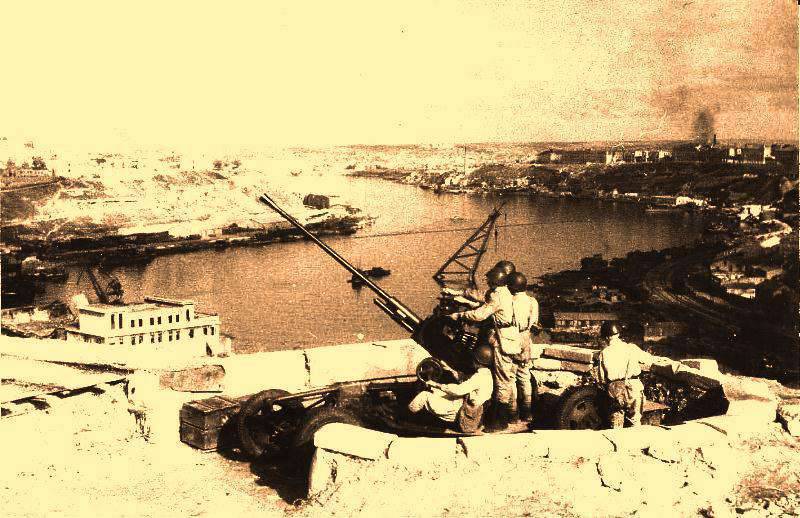
The peculiarity of the air defense of Sevastopol was that the air defense units had to operate in conditions of the complete domination of enemy aircraft in the air. With each new assault on Sevastopol, the German command attracted an increasing number of aircraft to attack the Soviet troops and the city. Thus, during the second assault (December 1941 of the year), the enemy singled out an air squadron as part of 150 bombers only for operations against fleet ships. Sevastopol’s defensive area had only 53 serviceable aircraft.
Our aviation forces thawed every day. Small airfields, where Soviet fighters were based (on the Kulikovo field and at the Chersonesus lighthouse), were constantly subjected to air strikes and shelling. During the defense of Sevastopol, 3372 bombs and 15624 artillery shells exploded at these airfields. Only in the parking lot 40 was destroyed and our aircraft was damaged by 131. The battles killed near 100 and injured the 103 pilot. In the decisive battles for Sevastopol no more than two dozen of our fighters could participate. Bomber aviation, in particular, Pe-2 aircraft based on Caucasian airfields, launched bombing and assault attacks on enemy airfields in the Crimea and were able to destroy and incapacitate many enemy aircraft. However, the main share of the fight against fascist aviation fell on anti-aircraft artillery and the remaining fighter aircraft.
Another feature of the anti-aircraft artillery fighting in the defense of Sevastopol was that 75% of its composition was used to repel enemy ground attacks, to fight against tanks and infantry. Therefore, anti-aircraft artillery was not fully used in the fight against German aircraft. In addition, by order of the command, 4727 privates and sergeants and 83 officers were assigned to the Marine Corps from air defense units, as a result of which many guns and anti-aircraft artillery equipment were serviced by abbreviated calculations.
In November, the 880 anti-aircraft artillery regiment of the Primorsky Army was included into the air defense system of the Sevastopol defense region, consisting of three battalions of the SZA and one MZA. However, the material part of his guns was badly worn out or damaged, there was a lack of ammunition, and the regiment itself was not fully manned. Navy anti-aircraft gunners could not help either. On 20 in May, 1942 of the year, before the decisive battles for Sevastopol, they lacked projectiles before full ammunition: for 85-mm guns - more than 13 thousand pieces, for 76,2-mm - about 13 thousand pieces. Sometimes, due to the lack of ammunition, the commanders did not open fire on single enemy aircraft, and kept a scant supply of shells to fight ground targets.
By the spring of 1942, the number of anti-aircraft weapons in Sevastopol was significantly reduced. The newly formed 62 zap, 122 zap and a detachment of aerostats barrage were forwarded to the Caucasus along with the squadron ships. In Sevastopol, there are: 61 zap, 1, 55, 114 rear, floating battery. Total 64 medium-caliber guns, 15 small-caliber cannons, 12 quadruple anti-aircraft machine guns M-4, 29 searchlight stations. For the third assault, the fascists pulled under Sevastopol parts and formations from all over the Crimea, concentrating here up to 600 aircraft of all classes. The forces were too unequal.
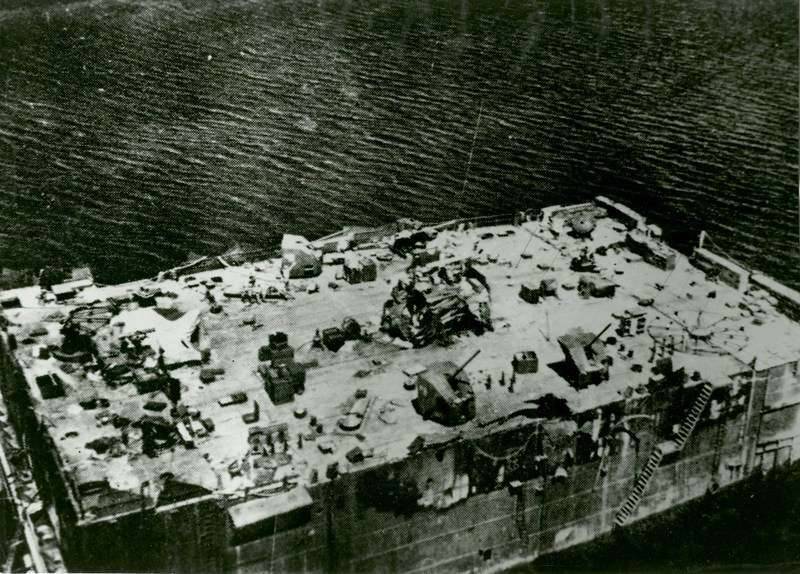
7 June 1942, after a long artillery and air preparation, the Germans launched an offensive. The gunners, anti-aircraft gunners, like other Sevastopol fighters, stood to death, causing significant damage to the enemy. Here are some examples.
The personnel of the 227-th antiaircraft battery of Lieutenant Ivan Grigorov Mamashayskoy near the valley within a short period of time 11 repulsed enemy attacks with enemy tanks, destroying tanks 7, 4 vehicles, mortars 13, 5 machine gun points, more than a battalion of infantry and 1 aircraft. The 229-I anti-aircraft battery of Senior Lieutenant N. Startsev in the Inkerman Heights area destroyed and dispersed the enemy's 8, crushed 3 mortar batteries, 30 machine-gun points.
From 7 to 13 in June, 1942 of the year fought bravely in the environment of 365-I anti-aircraft battery of Senior Lieutenant I. Pyanzina, who occupied a position near the Mekenzievy Gory railway junction. Dozens of air and ground enemy attacks were repulsed. Fascist tanks managed to break into a firing position when shells and grenades ran out on the battery. Then the seriously wounded battalion commander I. Pyanzin openly transmitted on his radio: "There is nothing to fight off ... the position of the fascists, open fire on our command post, I will correct myself."
During the defense of Sevastopol, the anti-aircraft gunners inflicted enormous damage on the enemy. Only fighters 61 anti-aircraft artillery regiment with 22 1941 June till June 30 1942 171 of destroyed enemy aircraft, tanks 84, 53 artillery and mortar batteries, machine-gun points 38, 164 car with manpower and goods, and to 14 thousand. German soldiers and officers. Due to the high combat readiness of the air defense unit of the GVBB Black Sea Fleet, the enemy’s initial plan, designed to mine the exit port and destroy the squadron ships, was thwarted. The coastal anti-aircraft artillery, in addition to its task of destroying enemy aircraft, was an important means of combating enemy ground forces. The effectiveness of the combat operations of anti-aircraft gunners in the defense of Sevastopol was achieved thanks to a clear and flexible interaction with parts of fighter aviation and ship defense, reliable and uninterrupted control of air defense units.
Sources:
Svetlyshin N. The Air Defense Forces of the country in the Great Patriotic War. M: Science, 1979. C.50-51, 80-82.
Group of authors. Air defense forces of the country. Historical feature article. M .: Military publishing house, 1968. S.232-237.
Ignatovich E., Kotov I. Anti-aircraft artillery in the defense of Sevastopol (1941 - 1942). // visage 1978. No.11 C.76-80
Ivanov A. Air defense troops in the defense of Sevastopol. // Bulletin of Air Defense. 1989. No.4. C.23-28.
Panov I. Admiral Philip Oktyabrsky M .: Young Guard, 1979. C.255-319
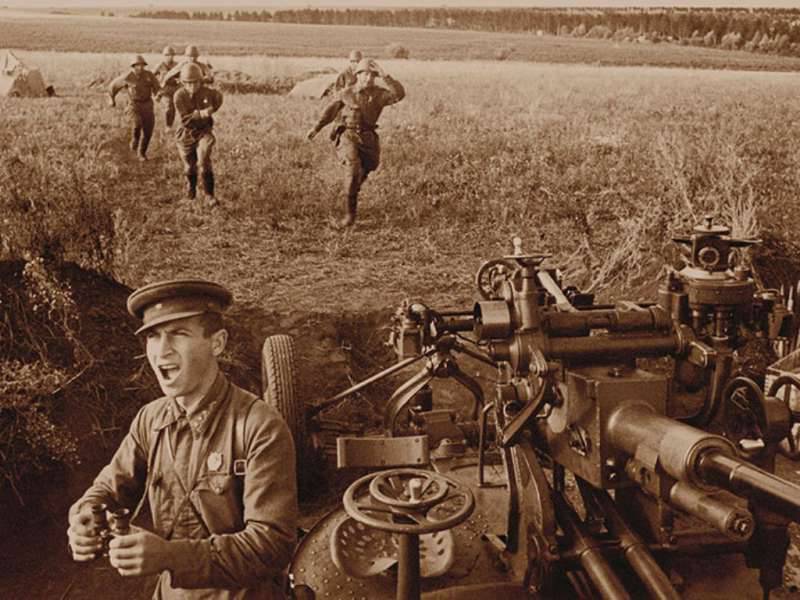
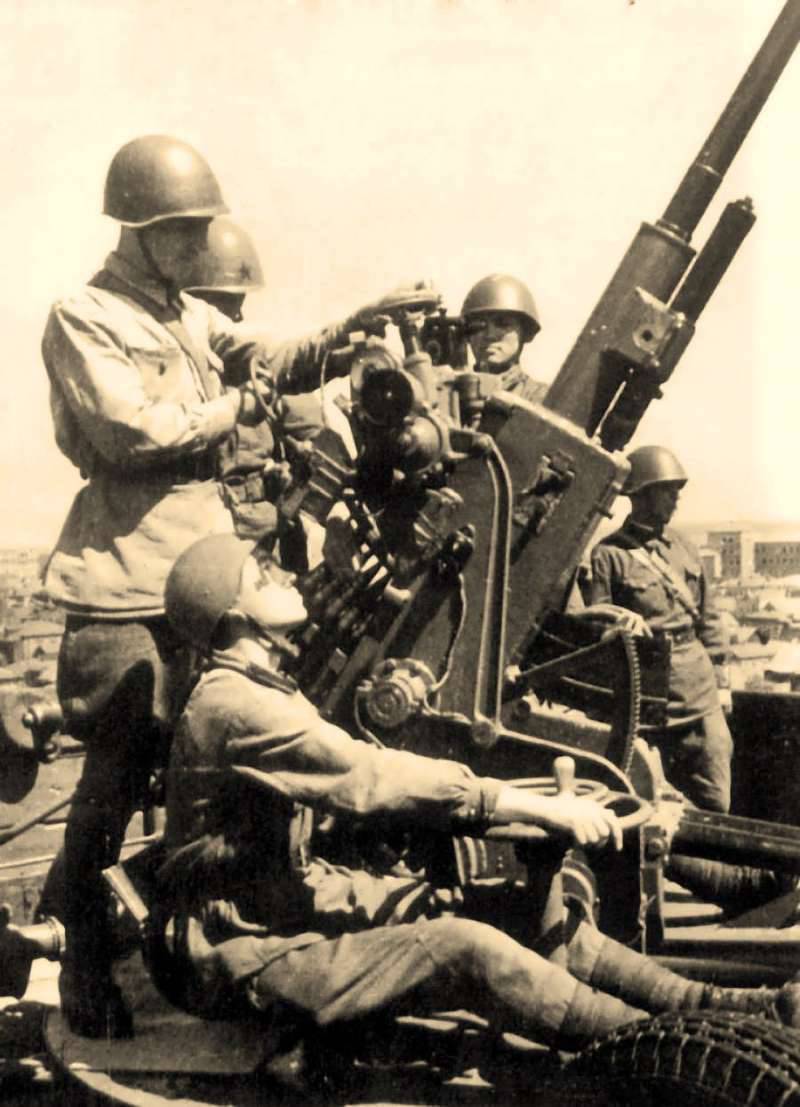
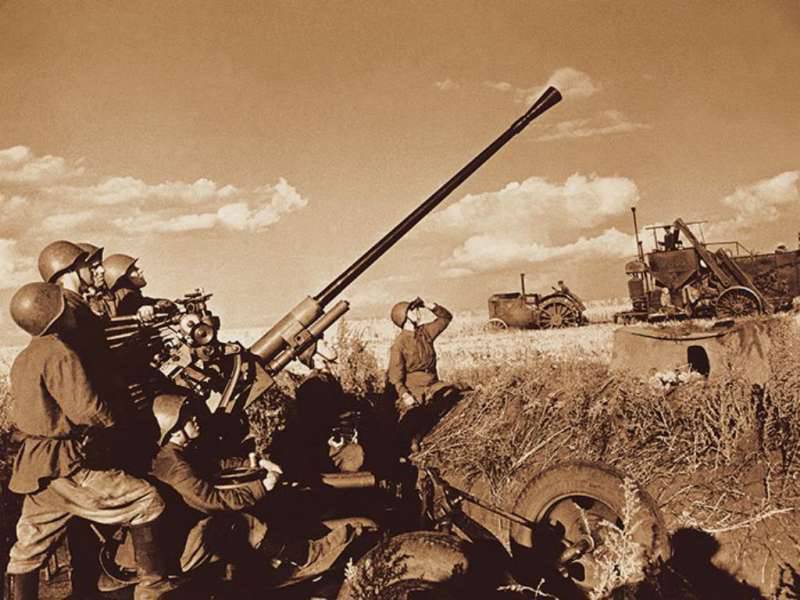
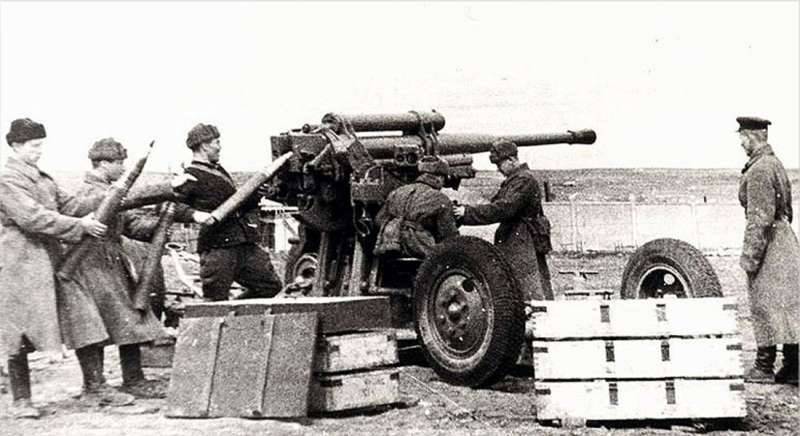
Information